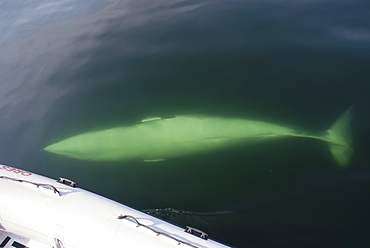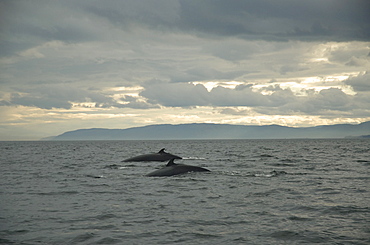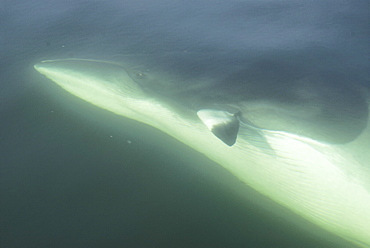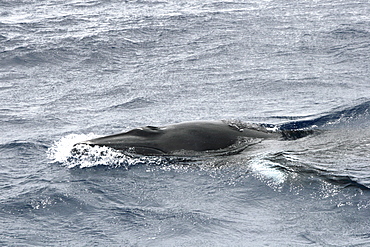Recent searches
Loading...
1112-4690 - An adult Antarctic minke whale (Balaenoptera bonaerensis), surfacing amongst brash ice in Cierva Cove, Antarctica, Polar Regions
1112-2841 - A curious Antarctic minke whale (Balaenoptera bonaerensis), approaches the Zodiac in Neko Harbor, Antarctica, Polar Regions
1112-2840 - A curious Antarctic minke whale (Balaenoptera bonaerensis) in Neko Harbor, Antarctica, Polar Regions
1112-2827 - A curious Antarctic minke whale (Balaenoptera bonaerensis) approaches the Zodiac in Neko Harbor, Antarctica, Polar Regions
911-10813 - Minke Whales(Balaenoptera acutorostrata) feeding in the Gerlache Strait separating the Palmer Archipelago from the Antarctic Peninsular off Anvers Island. The Antartic Peninsular is one of the fastest warming areas of the planet.
1112-2642 - A curious Antarctic minke whale approaches kayakers, in Neko Harbor, Antarctica, Polar Regions
1112-2641 - A curious Antarctic minke whale approaches kayakers, in Neko Harbor, Antarctica, Polar Regions
1112-2643 - A curious Antarctic minke whale approaches kayakers, in Neko Harbor, Antarctica, Polar Regions
1112-2226 - Curious adult dwarf minke whale (Balaenoptera acutorostrata), underwater near Ribbon 10 Reef, Great Barrier Reef, Queensland, Australia, Pacific
1112-2238 - Adult dwarf minke whale (Balaenoptera acutorostrata), underwater with snorkeler near Ribbon 10 Reef, Great Barrier Reef, Queensland, Australia, Pacific
1112-2221 - Adult dwarf minke whale (Balaenoptera acutorostrata), near the south end of Ribbon 9 Reef, Great Barrier Reef, Queensland, Australia, Pacific
1112-2224 - Adult dwarf minke whale (Balaenoptera acutorostrata) underwater near Ribbon 10 Reef, Great Barrier Reef, Queensland, Australia, Pacific
1112-2220 - Adult dwarf minke whale (Balaenoptera acutorostrata), near the south end of Ribbon 9 Reef, Great Barrier Reef, Queensland, Australia, Pacific
1112-2223 - Adult female dwarf minke whale (Balaenoptera acutorostrata) underwater near Ribbon 10 Reef, Great Barrier Reef, Queensland, Australia, Pacific
1112-2237 - Adult dwarf minke whale (Balaenoptera acutorostrata) with snorkelers near Ribbon 10 Reef, Great Barrier Reef, Queensland, Australia, Pacific
1112-2222 - Adult dwarf minke whale (Balaenoptera acutorostrata) near the south end of Ribbon 9 Reef, Great Barrier Reef, Queensland, Australia, Pacific
1112-2236 - Adult dwarf minke whale (Balaenoptera acutorostrata), with snorkeler, Great Barrier Reef, Queensland, Australia, Pacific
1112-2225 - Adult dwarf minke whale (Balaenoptera acutorostrata), underwater near Ribbon 10 Reef, Great Barrier Reef, Queensland, Australia, Pacific
1112-1086 - An adult Antarctic minke whale (Balaenoptera bonaerensis) surfacing in the Gerlache Strait, Antarctica, Southern Ocean, Polar Regions
1112-1049 - Antarctic Minke whale (Balaenoptera bonaerensis), Booth Island, Antarctica, Southern Ocean, Polar Regions
1112-1050 - Antarctic Minke whale (Balaenoptera bonaerensis), Booth Island, Antarctica, Southern Ocean, Polar Regions
990-166 - Late phase of an oblique lunge. The Minke whale (Balaenoptera acutorostrata) falls back into the water while its throat is still expanded and water is pushed out under high pressure. St. Lawrence estuary, Canada
990-155 - Close up of the blowholes of a Minke whale (Balaenoptera acutorostrata) that lie just posterior of the distinctive ridge stretching over the rostrum. St. Lawrence estuary, Canada
990-148 - Amazing closeup of a lunging Minke whale (Balaenoptera acutorostrata) feeding on krill. Some of these small euphausiids are still hanging on to the expanded grooves. St. Lawrence estuary, Canada
990-146 - She canÃt be more trusting than that. A curious Minke whale (Balaenoptera acutorostrata) has turned upside down exposing her white belly, navel and genital slits to the photographer. St. Lawrence estuary, Canada
990-167 - A perfect oblique lunge of a Minke whale (Balaenoptera acutorostrata) surface feeding in the early evening. Its Grooves are expanded and water is purged out, two main characteristics of a feeding strike. St. Lawrence estuary, Canada
990-139 - The Indian summer colours the tree line along the coast indicating the oncoming winter. A sign that Minke whales (Balaenoptera acutorostrata) should start their migration south to unknown waters. St. Lawrence estuary, Canada
990-161 - Steering with its pectoral fins the friendly Minke whale (Balaenoptera acutorostrata) turns its streamlined body towards the boat in order to dive under the hull. St. Lawrence estuary, Canada. Sequence 5/6
990-180 - She canÃt be more trusting than that. A curious Minke whale (Balaenoptera acutorostrata) has turned upside down exposing her white belly, navel and genital slits to the photographer. St. Lawrence estuary, Canada
990-164 - Closeup of a the mouth tip of a lunging Minke whale (Balaenoptera acutorostrata). To extract the engulfed fish the whale purges water through a slight opening between its lips. St. Lawrence estuary, Canada
990-168 - A dense net of blood vessels colour the belly of Minke whales (Balaenoptera acutorostrata) named Picasso pink during high feeding activity. St. Lawrence estuary, Canada
990-159 - The white flipper band of a Minke whale (Balaenoptera acutorostrata) is visible through the greenish water. This distinctive feature is characteristic of Minke whales of the northern hemisphere and the most obvious difference to their relatives in the Antarctic. St. Lawrence estuary, Canada
990-170 - The distinctive colouration pattern of a Minke whale (Balaenoptera acutorostrata). Note that the typical white flipper band extends on to the lower side of the pectoral fin. St. Lawrence estuary, Canada (RR)
990-160 - Approaching the boat from behind, this Minke whale (Balaenoptera acutorostrata) heaves its head out of the water. St. Lawrence estuary, Canada. Sequence 2/3.
990-153 - Although largely solitary animals, certain individual Minke whales (Balaenoptera acutorostrata) of the St. Lawrence estuary, Canada, have started to form pairs in recent years. Reasons for this are not yet well understood.
990-162 - A friendly Minke whale (Balaenoptera acutorostrata) has rolled onto its right side to take a better look at the excited people on the boat. Note that the left eye is open. St. Lawrence estuary, Canada
990-150 - ItÃŒs all about being fast and agile when hunting small schooling capelin, the main prey of Minke whales (Balaenoptera acutorostrata) in the St. Lawrence estuary, Canada
990-145 - Very slowly, a curious Minke whale (Balaenoptera acutorostrata) surfaces spreading its pectoral fins perpendicular to its body. St. Lawrence estuary, Canada
990-147 - The purging water almost reaches the photographers camera. Closeup of an oblique lunge of a surface feeding Minke whale (Balaenoptera acutorostrata). St. Lawrence estuary, Canada
990-142 - Minke whale (Balaenoptera acutorostrata) swimming into a path of light created on the watervs surface by the setting sun. St. Lawrence estuary, Canada. Sequence 1/2.
990-144 - Surfacing sequence of a Minke whale (Balaenoptera acutorostrata) which is following the research vessel. Such friendly whales are most often curious juveniles which love to take a break from their main activity, feeding. St. Lawrence estuary, Canada Sequence 3/6.
990-156 - What is more beautiful? The harmonically formed tip of the Minke whaleÃŒs (Balaenoptera acutorostrata) snout or the water bubble along its lips? St. Lawrence estuary, Canada
990-140 - Minke whale (Balaenoptera acutorostrata) surfacing in the green coloured water. Although exposed, she still has both blowholes tightly closed. Note the pronounced ridge on the rostrum, a main feature of rorqual whales. St. Lawrence estuary, Canada Sequence 1/2.
990-163 - She canÃŒt be more trusting than that. A curious Minke whale (Balaenoptera acutorostrata) has turned upside down exposing her white belly, navel and genital slits to the photographer. St. Lawrence estuary, Canada
990-141 - A beautiful and powerful cloud formation above the surfacing Minke whales (Balaenoptera acutorostrata). St. Lawrence estuary, Canada
990-165 - Oblique lunge of a Minke whale (Balaenoptera acutorostrata) named Crowsfoot who has performed all feeding manoeuvre types known from the St. Lawrence estuary, Canada
990-152 - Two Minke whales (Balaenoptera acutorostrata) surfacing as a pair. Whales migrating to the St. Lawrence estuary, Canada, have to share their summer feeding ground with numerous freighters along the international seaway which connects Quebec City with the Atlantic ocean.
990-143 - Friendly Minke whale (Balaenoptera acutorostrata) surfacing laterally and curiously approaching the research vessel. St. Lawrence estuary, Canada
990-169 - Like a piece of art thousands of waterdrops cover the expanded belly of a Minke whale (Balaenoptera acutorostrata) performing a ventral arc. St. Lawrence estuary, Canada
990-154 - Unusual scratches and impermanent patches on the skin of a Minke whale (Balaenoptera acutorostrata) known as Otter who was first identified in the St. Lawrence estuary, Canada, in 1996.
990-157 - The pointy snout of a surfacing Minke whale (Balaenoptera acutorostrata) keeping its blowholes tightly closed until the moment they break the surface. St. Lawrence estuary, Canada
990-149 - Closeup of a Minke whale (Balaenoptera acutorostrata) showing the beautiful pattern of parallel grooves near the tip of the snout. St. Lawrence estuary, Canada
990-158 - Even in conditions with little visibility, the white flipper band of a Minke whale (Balaenoptera acutorostrata) shines through the water of the St. Lawrence estuary, Canada
990-151 - The result of a strong head slap of a Minke whale (Balaenoptera acutorostrata). Such a splash supposedly scares shoaling fish that are known to cluster when threatened. St. Lawrence estuary, Canada
1112-946 - Northern minke whale, Balaenoptera acutorostrata, surfacing in Cattle Pass, San Juan Islands, Washington, United States of America, North America
1191-7 - Minke whale. Balaenoptera acutorostrata. Minke whale in brash ice, danko bay, antarctica
1074-19 - Minke whale ( Balaenoptera acutorostrata) associating with North Sailing whale-watching boat. Blow lit up by low light Fjordland, in far north of Iceland.
1074-20 - Minke whale (Balaenoptera acutorostrata) associating with North Sailing whale-watching boat Husavik, close to the arctic circle at the top of Iceland.
1074-32 - Minke whale (Balaenoptera acutorostrata) surfacing high out of the water in front of some whale-watchers. Husavik, Iceland
1074-12 - Minke whale (Balaenoptera acutorostrata) surfacing at speed after lunging through bait ball of fish under seagulls. Husavik, Iceland
1074-28 - Two whale watching boats at rest with a minke whale (Balaenoptera acutorostrata) lying on the surface between them. Husavik, Iceland.
1074-23 - Whale-watchers leaning over a Minke whale (Balaenoptera acutorostrata), which has stopped and is showing interest in them. Husavik, Iceland
1074-22 - Minke whale (Balaenoptera acutorostrata) spy hopping near a whale-watching boat. Husavik, Iceland
988-23 - Minke whale (Balaenoptera acutorostrata). Damage to dorsal fins is often used for photo-identification purposes but even simply the shape of a 'clean' fin such as this may be identifiable. Hebrides, Scotland
1074-11 - Minke whale (Balaenoptera acutorostrata) lifting its rosturm above the suface and associating with whale watching boat. Slender rostrum and small blow hole typical of minke
1074-13 - Minke whale (Balaenoptera acutorostrata) spy hopping with white fins and rostrum visible. Husavik, Iceland
988-168 - Minke whale (Balaenoptera acutorostrata) caught in creel line. Minke whales are occasionally caught in the lines connecting lobster pots (creels) and will drown if not released promptly. This creel fishermen helped researchers untangle this dead whale from another fisherman's gear. Hebrides, Scotland
1074-14 - Minke whale (Balaenoptera acutorostrata) spy hopping in low light at sunset with rosturm visible. Husavik, Iceland
1074-10 - Minke whale ( Balaenoptera acutorostrata) spy hopping, showing throat grooves. Slender rostrum typical of minke whales. Husavik, Iceland
1012-51 - Dwarf Minke Whales & snorkeler. Coral Sea, Australia
1036-126 - Minke whale (Balaenoptera acutorostrata) part of surfacing sequence. Iceland.
1036-124 - Minke whale (Balaenoptera acutorostrata) at surface with dorsal fin Hebrides, Scotland, UK
1036-133 - Minke whale (Balaenoptera acutorostrata) lunge feeding showing throat grooves, Iceland
1036-129 - Minke whale, Hebrides, Scotland, UK, Europe
1036-132 - Minke whale (Balaenoptera acutorostrata) feeding on bait ball at surface, Isle of Mull, Hebrides, Scotland
1036-127 - Young Minke whale (Balaenoptera acutorostrata) surfacing. Thin body. Hebrides, Scotland.
1036-210 - Aerial shot of the research yacht, The Song of the Whale, being investigated by a Minke whale (Balaenoptera acutorostrata), while one of the crew tries to get a closer look fro
1036-125 - Minke whale (Balaenoptera acutorostrata) Iceland.
1036-134 - Minke whale (Balaenoptera acutorostrata) surfacing, Hebrides, Scotland
1036-128 - Minke whale (Balaenoptera acutorostrata) lunge feeding at surface showing throat grooves, Husavik, Iceland
1036-130 - Minke whale (Balaenoptera acutorostrata) showing characteristic shevron pigmentation and dorsal fin set relatively far down the back. Hebrides, Scotland.
1036-131 - Minke whale (Balaenoptera acutorostrata) surfacing with open blow holes visible. Reykjavik, Iceland.
985-20 - Minke whale (Balaenoptera acutorostrata) surfacing in fjord with snow capped mountains behind. Husavik, Iceland.
1034-24 - Dwarf Minke Whale ( Balenoptera acutorostrata subsp). Kaikoura, South Island, New Zealand.
985-21 - Minke whale (Balaenoptera acutorostrata) lunge feeding at surface showing pink throat grooves. Olafsvik Iceland
985-19 - Minke whale (Balaenoptera acutorostrata) surfacing in fjord with snow capped mountains behind. Husavik, Iceland.
969-176 - Minke whale (Balaenoptera acutorostrata) lunge feeding at the surface, with fish leaping to safety. Pink throat groveso visible. Hebrides, Scotland
969-172 - Minke whale (Balaenoptera acutorostrata) at the surface to breath with blow hole open. Characteristic white bands on the flipper visible thorugh the water. Hebrides, Scotlan
969-213 - Minke whale (Balaenoptera acutorostrata) with a loup of plastic packing tape stuck in its baleen, round its upper jaw and over its blow hole. Hebrides, Scotland
969-173 - Minke whale (Balaenoptera acutorostrata) surfacing towards the camera with characteristic white bands on each flipper visible through the water. Hebrides, Scotland
969-215 - Whale watchers eye to eye with an inquistive Minke whale (Balaenoptera acutorostrata) associating with their boat. Hebrides, Scotland
969-175 - Minke whale (Balaenoptera acutorostrata) surfacing for air with characteristic white bands on its flippers visible through the water on each side . Hebrides, Scotland
969-174 - Minke whale (Balaenoptera acutorostrata) showing the characteristic single ridge down between the blow hole and rostrum. Hebrides, Scotland
969-223 - Minke Whale Surfacing Sequence. Azores, North Atlantic
969-170 - Minke whale (Balaenoptera acutorostrata) with an old wound in its dorsal fin now used to recognise this individual by biologists every year in the Hebridean waters. West coast, Scotland
969-171 - Minke whale (Balaenoptera acutorostrata) at the surface to breath with blow hole open. Characteristic white bands on the flipper visible thorugh the water. Hebrides, Scotland (1 of 2 images).
979-4257 - Adult Antarctic Minke Whale (Balaenoptera bonaerensis) surfacing in ice near Larrouy Island on the western side of the Antarctic Peninsula
979-4260 - Adult Antarctic Minke Whale (Balaenoptera bonaerensis) surfacing in ice near Larrouy Island on the western side of the Antarctic Peninsula



































































































